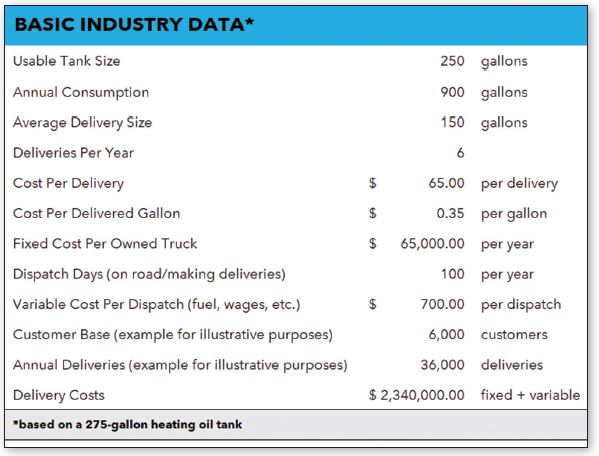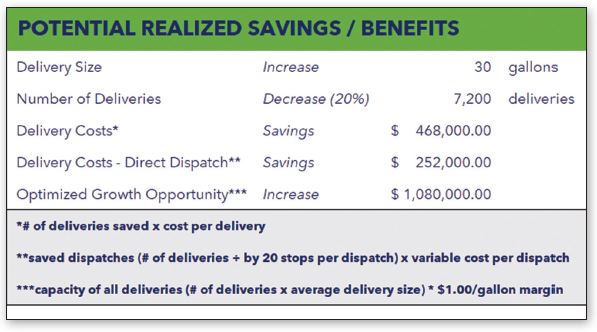Written on: February 12, 2024 by Phillip J. Baratz
You have data, we have data, and, wow, that’s a lot of data! There is data about trucks and service vans; driver’s wages and dispatcher’s wages; deliveries, stops per hour, miles per stop and costs per stop; costs per delivery, gallons per Heating Degree Day (HDD) and costs per delivered gallon. So much data.
In the realm of residential retail deliveries of fuel, all this data, and the metrics it leads to, are much more similar from one dealer to another than you might think. Yes, driving more miles between stops in a rural area will increase fuel and other delivery costs. However, rural areas typically pay lower wages than urban areas—so these two factors usually offset one another.
With operating costs heading only in one direction (up), unless you can be more efficient, the only way to maintain profits is to increase your margins.
As mentioned, most fuel marketers are within a similar range of efficacy, so many are turning to their pools of data to understand their metrics and then make plans to improve them. Here are some simple points to consider:

Delivering more per truck, which allows you to get trucks off the road, is one of the top goals of some new solutions in the marketplace. These solutions lead to setting achievable goals in coordination with management and dispatch to lower the costs to deliver your product. With a lower cost structure, operators can either run the current business with fewer transactions and moving parts, or (as we have seen in several cases) enabling growth without the necessity of enlarging your fleet or finding new drivers.
However, sometimes there is a disconnect. Helping a dispatcher increase average delivery sizes into 275-gallon heating oil tanks from 150 gallons to 180 gallons is great, and we’ve witnessed this success many times. As exciting as it might be for the dispatcher, and as nice as it is to reduce overtime costs in January, what is the true benefit? What does ownership see?
Ultimately, owners are concerned with the bottom line. In any given year, a host of outside factors can impact the bottom line. Would owners attribute the increase in delivery sizes to an increase in profitability? Perhaps it was a cold winter and consumption was up 10%. Alternatively, if equipment sales slumped because of higher interest rates, the increase of 30 gallons per delivery would be lost in the shuffle. However, the benefits of those increases are imbedded in the company’s profits, but they must be recognized.
Using “industry averages,” it costs approximately $65 to make a delivery, not including selling, general and administrative expenses (SG&A—which includes the cost of the fleet, fleet maintenance, insurance, wear and tear, dispatchers and driver wages with overtime and benefits)*. If you have 6,000 retail customers averaging 900 gallons of consumption and are averaging 150 gallons per delivery, your “base” is ~36,000 deliveries per year (900 / 150 = 6.

The only thing worse than not enough data is too much data. That can be true while trying to assess the concrete benefits, costs and priorities. Ultimately, at your core, you are a delivery company and if you can improve those costs, you will have a clear and definable set of benefits. The benefits will be in terms of costs per gallon, saved deliveries, gallons per HDD, etc. However, most importantly, they will be clearly defined by extra dollars of profit. ICM
*Please note that there are many details involved in delivery optimization and efficiency and your company will vary somewhat from the industry average. In addition, an increased cost savings is often achievable by shifting around the timing of certain deliveries using AI/ML (artificial intelligence/machine learning) focused on individual data points.